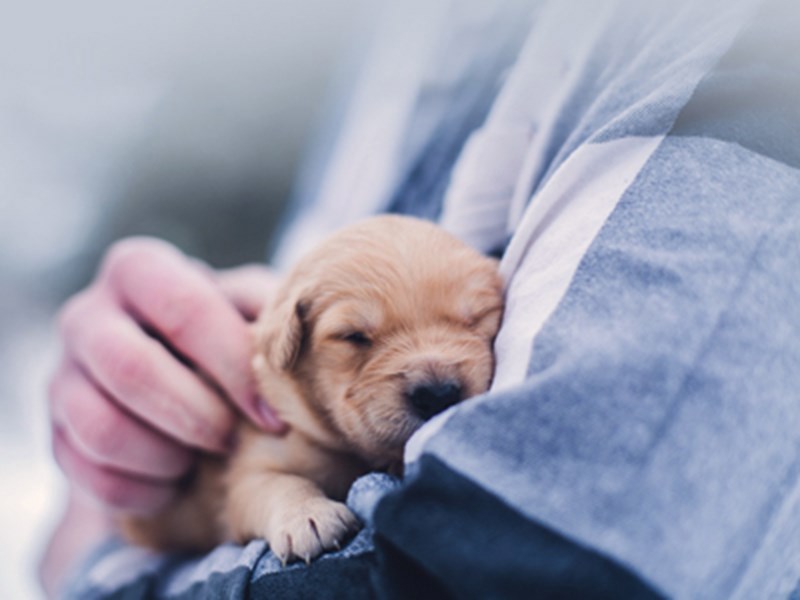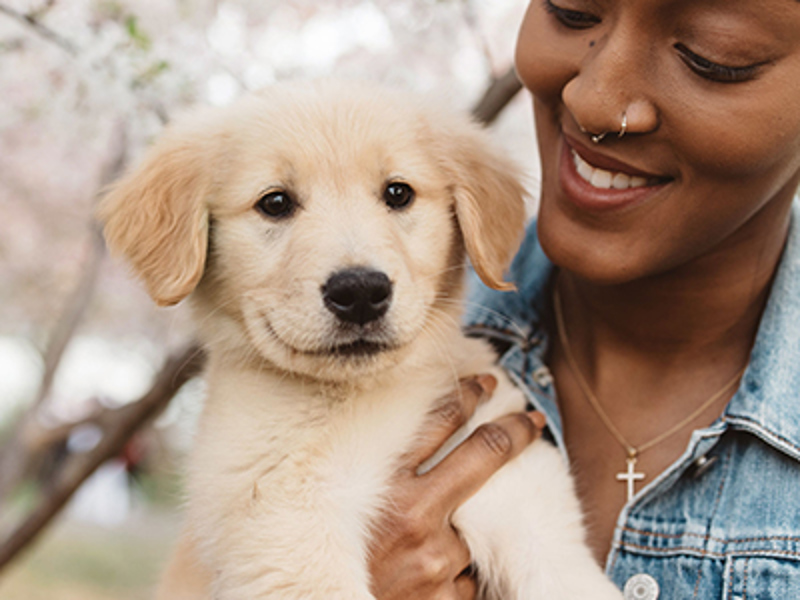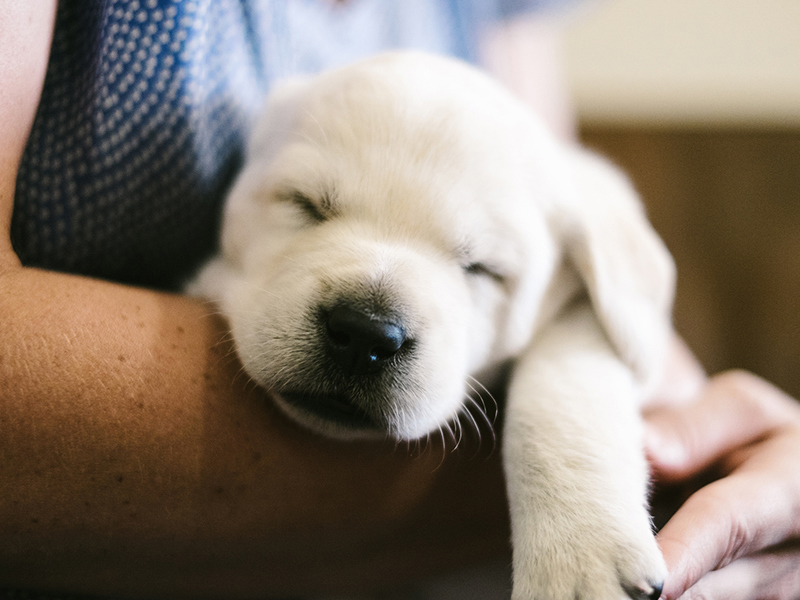
Dobermann
Breed characteristics
- Size
- Large
- Exercise
- More than 2 hours per day
- Size of home
- Large house
- Grooming
- Once a week
- Coat length
- Short
- Sheds
- Yes
- Lifespan
- Over 10 years
- Vulnerable native breed
- No
- Town or country
- Either
- Size of garden
- Large garden
About this breed
The largest of the Pinschers, the breed takes its name from the man who developed it: Louis Dobermann, a tax collector in Apolda, Germany. He wanted a fierce looking dog to protect him in his work, to act as a deterrent to any would be robbers, and with courage enough to defend and attack when required.
To a foundation of Pinscher blood was added Weimaraner, Greyhound, Manchester Terrier, Rottweiler and German Shepherd blood to get a combination of intelligence, speed and toughness of character.
By the late 19th century Dobermann had established the type he wanted in his dogs: the squarely built, clean outline with a wedge shaped head and keen expression. The breed was recognised by the German Kennel Club in 1899.
The Dobermann’s intelligence and trainability have been harnessed by the armed forces and the police and he has been used as a guard dog, a tracking dog and in various other roles. However, his loyal and obedient nature equips him to be an excellent family dog, a role in which he is equally comfortable.
Images for this breed
The Working breed group
Over the centuries these dogs were selectively bred to become guards and search and rescue dogs. Arguably, the working group consists of some of the most heroic canines in the world, aiding humans in many walks of life, including the Boxer, Great Dane and St. Bernard. This group consists of the real specialists in their field who excel in their line of work.
Colour Watch
Category 1: Breeds with 0 to 2% registered NBS colours
Read more about Colour Watch.
Breed Standard colours
Breed standard colour means that the colour is accepted within the breed standard and is a traditional and well-known colour in this breed.
Breed standard colours in this breed include:
- Black with rust red (tan)
- Blue with rust red (tan)
- Brown with rust red (tan)
- Fawn (Isabella) with rust red (tan)
- Black with rust red (tan) (white ancestry)
- Brown with rust red (tan) (white ancestry)
- Blue with rust red (tan) (white ancestry)
- Fawn (Isabella) with rust red (tan) (white ancestry)
Non-breed-standard colours
- (NBS) Cream and white (white ancestry)
- (NBS) White (white ancestry)
Non-breed-standard colour means that the colour is not accepted within the breed standard and whilst some dogs within the breed may be this colour it is advised to only select a dog that fits within the breed standards for all points.
Colour is only one consideration when picking a breed or individual dog, health and temperament should always be a priority over colour.
Other colour/s
'Other' means you consider your puppy to be a colour not currently known within the breed and one that does not appear on either the breed standard or non-breed standard list. In this instance you would be directed through our registrations process to contact a breed club and/or council to support you on identifying and correctly listing the new colour.
Health
Whether you're considering buying a Dobermann puppy or breeding from your dog, it's important to understand the health issues that may affect the breed and how they can be managed or avoided.
Pre-breeding health screening
Good Practice schemes and tests
We strongly recommend that breeders, at a minimum, conduct these tests before breeding, as evidence indicates these conditions are a significant concern in the breed.
- DNA test for von Willebrand disease (vWD1) - Find lists of tested dogs here
- DNA test for DINGS2 - Find a list of tested dogs here
Best Practice schemes and tests
These tests address conditions that are still significant for the breed, though they may not be as critical as those listed under Good Practice. They might be less common or newly identified, and research is ongoing to determine their full impact.
To support the breed’s health, responsible breeders should ensure they complete all tests in both categories. Following our Best Practice guidelines means completing both the Good Practice and Best Practice tests for your breed.
- Dogs to be eye tested minimum of once prior to being used for breeding (for PHPV)
- DNA test for DINGS2
- Hip testing (for hip dysplasia) using the BVA/KC Hip Dysplasia Scheme
Find out about a particular dog's results
Please visit our Health Test Results Finder to discover the DNA or screening scheme test results for any dog on The Kennel Club's Breed or Activity Register.
You can also view the inbreeding coefficient calculation for a puppy's parents, or for a dog you're thinking of breeding from.
DNA testing servicesDNA testing services
To support your health testing journey, we offer a breed-specific package tailored to your breed's unique health needs. This package provides important information about potential health risks, helping you make informed decisions. Click here to find out more and access the tests relevant to your breed.
Breed health & conservation plan
The Breed Health and Conservation Plans
Our breed health and conservations plans (BHCPs) use evidence and data to help us understand the health issues found in each pedigree dog breed. These plans help breeders and owners identify health and welfare problems and use information, health tests and health schemes to avoid passing on those problems to future puppies. They also support and provide breeders with tools and specialist expertise to help manage genetic diversity, understand the impacts of close breeding, and find the best ways to preserve the population of their breed.
Working together for the breed
We’ve worked with breed clubs and breed representatives to gather all available evidence to help us determine the priority concerns for the breed and decide how we can work together to manage and reduce these problems.
The full evidence base is available at the discretion of the breed clubs, however if you would like to seek access to the full report, please contact our health team.
More about health
Have any questions about health in your breed?
If you have any concerns about a particular health condition in your breed then you may wish to speak to your vet or you could contact your breed health co-ordinator.
Breed health co-ordinators are individuals working on behalf of breed clubs and councils who are advocates for the health and welfare of their chosen breed. They acts as a spokesperson on matters of health and will collaborate with The Kennel Club on any health concerns the breed may have.
To contact your breed health co-ordinator please email
Breed watch
Category 1
Currently no points of concern specific to this breed have been identified for special attention by judges, other than those covered routinely by The Kennel Club breed standard.
Breeding restrictions
There are a number of The Kennel Club rules and regulations that may prevent a litter from being registered, find out about our general and breed specific breeding restrictions below.
More about breeding
If there is any white ancestry in a Dobermann's pedigree, any progeny will be registered with (WHITE ANCESTRY) at the end of the selected colour.
Looking for a puppy?
Looking for a Dobermann? Explore our list of puppies and rescue dogs for sale near you.
More information

Need to find out more about a breed?
Use our Find a Club service where you can locate breed clubs that can offer support and advice.

Use our Find a Puppy service
The Kennel Club's Find a Puppy service provides contact details for breeders who have puppies available. Let's help you find your new best friend.

Get the best lifetime pet insurance
At Kennel Club Pet Insurance, we want you to focus on getting the best possible treatment for your dog without worrying about the cost.
